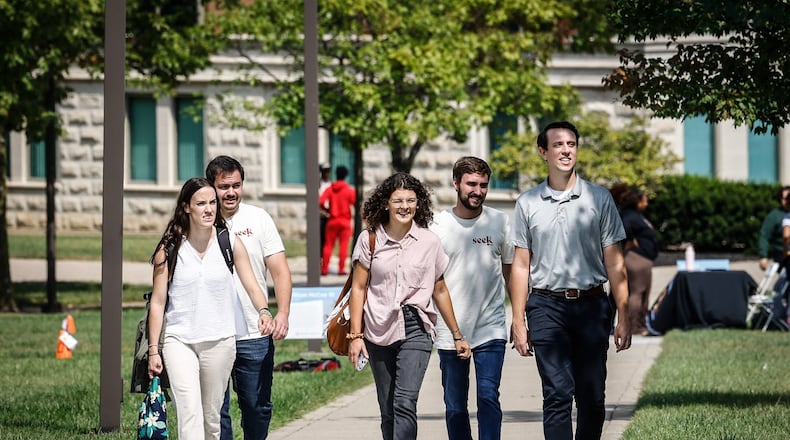“This increased enrollment signals Wright State’s recognition as an excellent value in higher education and an outstanding destination for students to further their education,” said Susan Schauer, vice president for enrollment management and student success.
The decline in enrollment was so bad in February 2021, WSU trustees voted to retrench 113 faculty positions, meaning that those positions would be cut in some way. Most of the positions were cut through retirements and people leaving for other jobs, and the university ultimately retrenched 16 faculty members. The university cited declines in enrollment as why the cuts needed to occur.
Wright State saw first-time student enrollment drop from 2,676 in fall 2015 to 1,541 students in fall 2022, a 42% decline.
WSU president Sue Edwards said improvements still need to be made in terms of enrollment. In addition to student recruitment goals, she set the goal of 75% retention by 2025, but the university is currently at 64% retention. Retention is a measure of how many students remain enrolled at the university year after year.
The university said more first-generation students were also enrolled at the university this semester. The fall class includes 350 first-generation college students, an increase of 12.5%, and 586 Pell grant recipients, an increase of 10.8%.
Edwards said the focus on first-generation students’ education was particularly important to her, as she was a first-generation college student herself.
“I want every student that we have to have the same opportunities that education has provided me,” Edwards said.
The number of first-time students from underrepresented groups increased by 27.6%, from 355 in fall 2021 to 453 in fall 2022.
The most popular majors among newly enrolled students are nursing, mechanical engineering, elementary education and psychology, all majors the university has said are “in-demand,” according to employers in the Miami Valley.
About the Author

